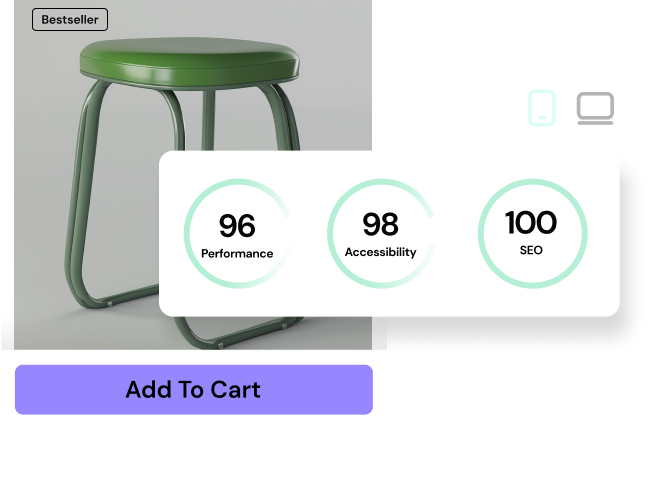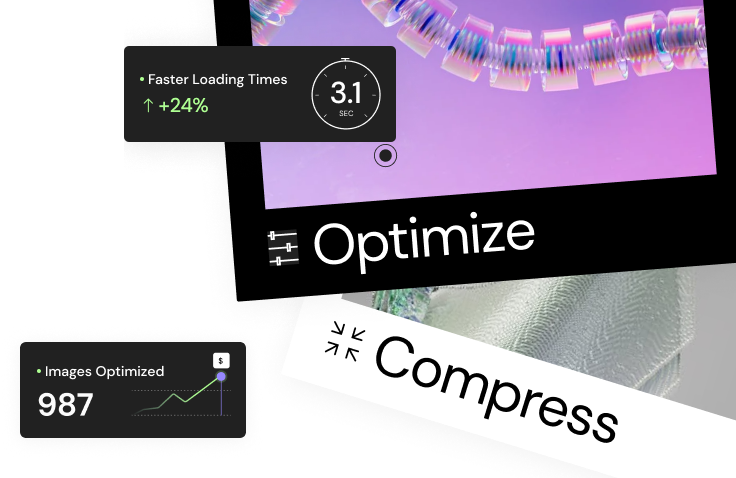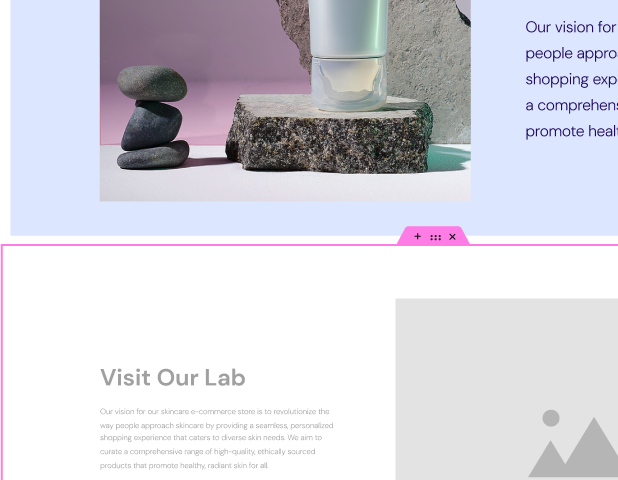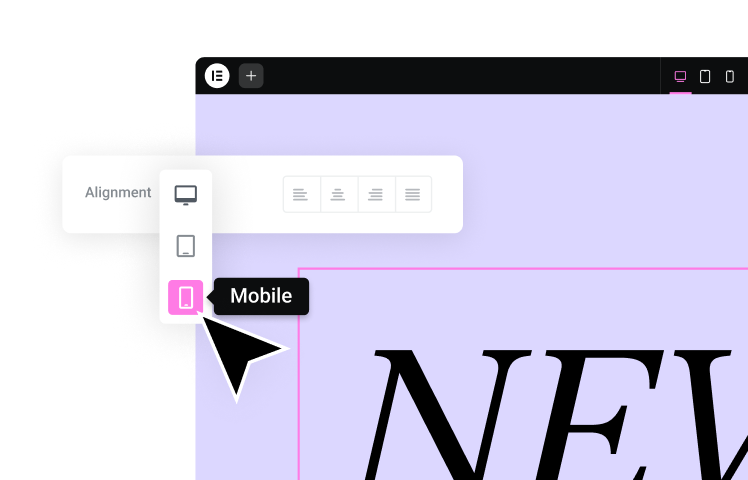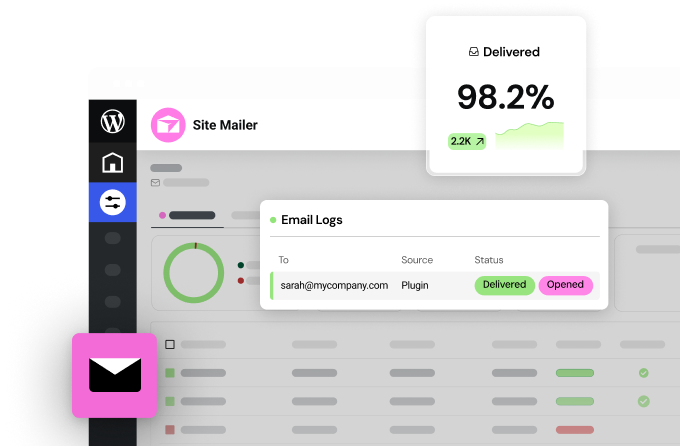Table of Contents
What is a Blog?
A blog is an online platform where you can share your thoughts and ideas with others. It’s like a digital journal that shows new posts first. Blogs can cover many topics, from personal stories to expert advice.
Blogs have three key features that set them apart. First, they’re updated often. New content keeps readers coming back for more. Second, they’re interactive. Readers can comment and share, which builds a community around your blog. Third, they’re easy to find. Search engines can help people discover your blog posts, bringing more visitors to your site.
The Oxford Languages Dictionary defines a blog as “a regularly updated website or web page, typically run by an individual or small group, written in an informal or conversational style.”
But blogs have grown beyond just online diaries. They now serve many purposes, such as sharing information, building relationships, and achieving business goals. A broader definition might be: A blog is a website that publishes content in reverse date order, often focusing on a specific topic. This content can include text, images, videos, and audio.
Parts of a Blog
Understanding the main parts of a blog will help you create and manage your own. Let’s look at the key elements that make up a typical blog.
Blog Posts are the heart of your blog. They are the main entries that appear first, with the newest first. Blog posts can cover various topics and styles, giving you flexibility in your content.
Pages are different from posts. They contain lasting information about the blog or author. You might have an “About Me” page to introduce yourself or a “Contact” page for readers to reach you.
To keep your blog organized, you’ll use Categories and Tags. Categories are broad groups for your posts, while tags are more specific keywords. This system helps readers find the content they’re interested in.
The Comments Section is where your blog comes to life. Readers can share their thoughts and ask questions here. It’s a great way to build a community around your blog and get feedback on your ideas.
Most blogs have a Sidebar, usually found on the side of the main content. This area can include useful tools like a search bar, links to your social media, a list of recent posts, or even ads and calls to action.
Lastly, the Header and Footer frame your blog. The header sits at the top and often features your blog’s title, logo, and main menu. The footer at the bottom might have copyright information and links to important pages.
By understanding these parts, you’ll be better equipped to create a blog that’s both functional and engaging for your readers.
The Story of Blogs: From Online Diaries to Business Tools
How Blogs Began and Grew
Blogs have changed a lot since they first started. Let’s look at how they’ve grown over time:
In the mid-1990s, people started making personal websites and online diaries. These were the first steps towards what we now call blogs. Back then, people mostly used them to share their thoughts and keep in touch with friends and family.
Open Diary, which started in 1998, was one of the first platforms that looked like modern blogs. It lets users write online journals and talk to each other. Then, in 1999, LiveJournal came along. It was similar but focused more on building communities.
As more people gained internet access and technology improved, new blogging platforms appeared. Blogger and WordPress started in the early 2000s. These platforms made it easier for anyone to create and run their own blog, leading to a big increase in the number of blogs.
Blogs Today
Now, blogs are everywhere on the internet. There are millions of them, covering almost every topic. Social media has helped blogs reach even more people, letting bloggers connect with their readers in new ways.
Two big trends in blogging today are:
- Niche blogs focus on specific topics. For example, a blog might be about vegan cooking, saving money, or living a green lifestyle. Niche blogs help bloggers become experts in their field and build a loyal group of readers.
- Professional blogging: Many bloggers now treat their blogs like businesses. They make money through ads, promoting products, and selling their own stuff. This has led to bloggers working hard to create high-quality content and get more readers.
Elementor is a tool that helps bloggers make great-looking websites. It’s easy to use and has lots of features to help your blog stand out. Whether you’re new to blogging or have been doing it for years, Elementor can help make your blog better.
Types of Blogs
There are many different kinds of blogs. Let’s look at some of the most common types:
1. Personal Blogs
Personal blogs are like online diaries. People use them to share their thoughts, experiences, and views on life. These blogs often cover many topics, from everyday life to hobbies and travel.
Personal blogs can help you:
- Connect with people who like the same things you do
- Keep a record of your life
- Express your creativity
Some personal blogs become very popular. These often focus on one area, like being a parent, fashion, or managing money. They can give readers useful advice and a sense of community.
Example: A travel blog where a couple shares stories and photos from their trips around the world. They also give tips to help other travelers.
2. Business Blogs
Business blogs are different from personal blogs. They have specific goals, like:
- Making more people know about the business
- Getting new customers
- Increasing sales
These blogs usually write about topics related to what the business sells or does. They give readers helpful information and show that the business knows what it’s talking about.
Business blogs can:
- Show that the company is an expert in its field
- Build trust with customers
- Bring more people to the company’s website
- Help the sales team find new customers
Example: A software company’s blog that writes about new trends in technology, updates to their products, and stories about happy customers. This blog helps show that the company knows its stuff and attracts people who might want to buy from them.
Elementor is great for businesses that want to create a professional-looking blog. It’s easy to use and has lots of features to help create a blog that looks good and conveys the company’s message.
3. Niche Blogs
Niche blogs focus on very specific topics. They write for a particular group of people who are really interested in that subject. This lets the bloggers become experts in their chosen area and build a strong community around their content.
Niche blogs can cover all sorts of topics, from hobbies like knitting or gardening to professional topics like marketing or computer programming. By writing for a specific audience, these blogs can become the go-to place for information and discussion about their topic.
Example: A blog all about coffee. It might review different types of coffee beans, give tips on how to make the best coffee, and share news about what’s happening in the coffee world. This kind of blog would appeal to people who love coffee and want to learn more about it.
Why Start a Blog? The Perks of Blogging
Are you thinking about starting a blog? You’re on to something good! Blogging can bring many benefits, both for you personally and for your business. Let’s look at some great reasons to start blogging.
Personal Perks of Blogging
Blogging can be really rewarding for you as a person. It gives you a place to be creative, share your thoughts, and meet people who like the same things you do. Here are some of the best personal benefits:
1. Express Yourself and Be Creative A blog is your space to share your ideas, feelings, and experiences. You can write, share photos, or even make videos—it’s up to you!
2. Learn New Skills When you blog, you improve your writing and communication skills. You also learn about new tech and keep up with what’s happening online.
3. Meet New People Blogging can help you connect with people from all over who like the same things you do. You can make new friends, learn from others, and join online groups.
4. Grow as a Person. Writing about your thoughts can help you understand yourself better. It’s like keeping a diary, but you might also get feedback from others.
Business Benefits of Blogging
For businesses, blogs are a powerful tool. They help you connect with customers, make your brand known, and sell more. Here’s how blogs can help your business:
1. Get More Website Visitors Good blog posts to bring more people to your website. If you write helpful stuff regularly, more people will find your site when they search online.
2. Find New Customers You can use your blog to get contact info from potential customers. For example, you could offer a free guide in exchange for their email address.
3. Build Your Brand Sharing your knowledge in blog posts shows that you know your stuff. This helps people trust your business and remember your brand.
4. Talk with Customers Blogs let you chat with your customers. You can answer their questions and show them you care about what they think.
5. Show Up in Search Results Search engines like Google love websites that add new content often. A blog with regular posts can help your website show up higher in search results.
Blogging for Better Search Results (SEO)
Blogging is great for SEO (Search Engine Optimization). SEO is all about making your website easy to find on search engines like Google. Here’s how blogging helps:
1. Use Important Words In your blog posts, you can naturally use words that people might search for when looking for businesses like yours.
2. Keep Your Site Fresh Search engines like websites that add new stuff often. A blog is perfect for this because you can keep adding new posts.
3. Get Other Sites to Link to You If you write really good blog posts, other websites might link to them. These links help your website look more important to search engines.
4. Keep People on Your Site Longer: Interesting blog posts make people stay on your website longer. This tells search engines that your site is helpful, which can boost your search rankings.
By focusing on writing helpful and interesting blog posts, you can improve your website’s SEO and get more people to find your site when they search online.
Why You Need a Blog in 2025
Blogs are still important in 2025. They help you reach your goals, whether you’re just one person or a big company. You might wonder if blogs matter when there are so many ways to connect online. The answer is yes, they do!
The internet keeps changing. New apps and tech pop up, and people use them differently. But blogs are still a big deal. They do things other platforms can’t.
Blogs let you write a lot. On social media, you often can’t write much. But on a blog, you can really explain things. This helps you show that you know what you’re talking about. People trust you more when you share good information.
You control your blog. It’s all yours. You decide what goes on it and how it looks. Social media sites have rules that can limit who sees your posts. With a blog, you don’t have that problem.
Blogs can do many things. You can use a blog to:
- Share your personal thoughts
- Build a community
- Market your business
- Sell things
This makes blogs great for anyone to use.
Finding Your Readers
One of the best things about having a blog in 2025 is that it helps you connect with people who like what you do. When you write about stuff that interests them, they’ll want to read your blog.
Blogs show you’re an expert. When you share what you know, people see you as a leader in your field. This is great for businesses. It helps you get new customers and keep the ones you have.
You can talk with your readers. They can leave comments on your blog posts, and you can answer them and start conversations. This helps build a community around what you do.
In a world full of information, a blog helps you stand out. You can write exactly what your readers want to know. This works better than trying to reach everyone with general information.
Making Your Name Known Online
These days, it’s important for people and businesses to be known online. A blog helps with that. It’s like your home base on the internet. It shows who you are and what you’re good at.
A good blog makes you look like an expert. When people search for info about what you do, they might find your blog posts. This brings more people to your website. It can lead to new chances to work with others or be recognized in your field.
A blog builds a community. People can talk about your posts and share ideas. This makes them feel connected to you or your business. They’re more likely to stick around and support you.
Elementor’s WordPress hosting is great for bloggers who want to make their mark online. It’s fast, safe, and works really well with WordPress. This means your blog will always be up and running smoothly.
How to Start a Blog: A Simple Guide
Want to start a blog? It’s easier than you might think! Here’s a step-by-step guide to help you get going, from picking a platform to writing your first post.
Step 1: Pick a Blogging Platform
First, you need to choose a blogging platform. This is the software that runs your blog and gives you tools to create and manage your content. Here are some popular options:
- WordPress.org: You host this yourself. It gives you lots of control over how your blog looks and works, which is great for people who want to customize everything.
- WordPress.com: This is hosted for you. It’s easier to use but doesn’t let you change as much. Good for beginners.
- Blogger: It’s free and easy to use. Google runs it. It’s good for casual bloggers who don’t need fancy features.
- Medium: Popular with writers who want lots of readers. It has a built-in community and a clean look.
- Tumblr: Good for sharing short posts, pictures, quotes, and videos. Popular with younger users.
How to choose: Think about what you need. Do you want to change a lot of things? Are you okay with managing technical stuff? Who do you want to reach? Your answers will help you pick the right platform.
Tip for Elementor users: If you use Elementor, you’re in luck! It works great with WordPress. You can easily design your blog using Elementor’s drag-and-drop tools and templates.
Step 2: Set Up Your Blog
Once you’ve picked a platform, it’s time to set up your blog. Here’s what to do:
- Pick a domain name: This is your blog’s web address (like www.yourblogname.com). Choose something easy to remember and spell.
- Choose a hosting provider: If you’re using WordPress.org, you’ll need a company to store your blog’s files online. This is called a hosting provider.
- Install WordPress: If you pick WordPress.org, you need to install it on your hosting account. Most hosting companies make this easy with one-click install tools.
- Pick a theme: A theme decides how your blog looks. There are thousands to choose from, both free and paid. Pick one that fits your style and has the features you need.
- Make it your own: Once you’ve installed a theme, you can change it to fit your needs. You might change colors, fonts, layouts, or add widgets (extra features).
Elementor users: If you use Elementor’s WordPress hosting, a lot of this is done for you. WordPress and Elementor Pro come pre-installed, so you can start designing right away.
Step 3: Design Your Blog
Now it’s time to make your blog look good. A well-designed blog can keep people interested and make them want to read more.
Here’s what to focus on:
- Choose a theme: Pick a theme that fits your topic and style. Make sure it works well on phones and computers.
- Make it your own: Change colors, fonts, and layouts to match your style. Add widgets to your sidebar and footer to make your blog more useful.
- Create a logo: A logo helps people remember your blog. Keep it simple and related to your topic.
- Make it easy to use: Make sure people can find what they need on your blog. Use clear headings, short paragraphs, and good pictures. Make sure your blog loads quickly on all devices.
Elementor tip: Elementor’s website builder makes designing easy. You can drag and drop elements to create your layout and use pre-designed templates to get started quickly.
Remember, starting a blog takes time and effort, but it can be really rewarding. Don’t be afraid to experiment and find what works best for you!
How to Create Engaging Blog Posts
Ready to write your first blog post? Let’s get started! Here’s how to create posts that people will want to read.
Writing Your First Post
Start by thinking about what you love, what you know a lot about, or what problems you can help solve. These topics make great starting points for your blog posts.
Next, decide how you want to write your post. You could write a normal article, create a list, create a how-to guide, or share a personal story. Choose the style that best fits your topic.
Your title is crucial – it’s the first thing people see. Make it clear and interesting to grab attention. Then, focus on writing good content. Use simple language and break up your text with headings. Adding pictures can help keep readers interested.
Before you hit publish, take time to check your work. Fix any mistakes to make your post look professional. After publishing, share your post on social media and email it to your blog followers. Don’t forget to reach out to other bloggers in your field – they might help spread the word.
Tip for Elementor Users: Elementor’s AI tools can be a big help when you’re writing. They can give you ideas, help with the actual writing, and even translate your post into other languages.
How to Write Posts People Want to Read
Creating posts that grab and hold attention takes some skill, but you can improve with practice. Start with an awesome title that uses strong words, numbers, or questions to make people curious. Your opening sentences should make readers want to keep going – start with a story, a surprising fact, or an interesting question.
People love stories, so use them in your posts to make your points clearer and more interesting. Add images, videos, or infographics to explain things visually and keep people engaged.
Remember that people often need more time. Get to the point quickly, use simple words, and keep your paragraphs short. At the end of your post, tell readers what to do next. You could ask them to leave a comment, sign up for your newsletter, or share your post.
Don’t worry if your first posts could be better. Writing great blog posts takes practice. Keep at it, and you’ll see improvement over time. The key is to start writing and to write regularly. Your unique voice and style will develop as you go.
Making Your Blog Easy to Find and Share
Writing great content is just the start. You also need to help people find your blog and want to share it. Let’s look at how to do that.
It’s important that search engines like Google can find and understand your blog. This is called SEO (Search Engine Optimization). Here’s how to do it:
- Find the Right Words: Before you write, look for words people use when searching for topics like yours. Use tools that help you find these words.
- Use Those Words Wisely: Put your chosen words in your title, headings, and throughout your post. But don’t overdo it – write naturally.
- Get Other Sites to Link to You: When other websites link to your blog, search engines think you’re important. You can do this by writing for other blogs or joining online discussions.
- Write Good Stuff. Search engines like helpful, well-written content. Focus on creating posts that answer people’s questions.
- Make Your Blog Easy to Use: Make sure your blog loads quickly and looks good on phones. A blog that’s easy to use ranks higher in search results.
Tip for Elementor Users: Elementor has tools to help with SEO. For example, its Headline Analyzer can help you write titles that people want to click on and search engines like.
Share Your Blog with the World
Writing great posts is only half the job. You also need to get people to see them. Here’s how:
Use Social Media
Social media is a great way to share your blog. Here’s how to do it well:
- Pick the Right Platforms: Use the social media sites where your readers hang out. If you’re writing for young people, try TikTok or Instagram. For professionals, LinkedIn might be better.
- Make Your Profiles Look Good: Completely fill out your social media profiles. Include a link to your blog and use words that describe what you write about.
- Share Interesting Stuff: Don’t just post links to your blog. Share pictures, ask questions, or run contests to get people interested.
- Use Hashtags: Hashtags help people find your posts. Use ones that fit your topic.
- Talk to Your Followers: Answer comments, join conversations, and get to know your followers.
- Check What’s Working: Look at your social media stats to see what posts perform well. This will help you know what to post more of.
Use Email
Email is still a great way to connect with your readers. Here’s how to use it:
- Build an Email List: Offer something free, like an ebook or exclusive content, to get people to sign up for your emails.
- Write Good Newsletters: Send regular emails with your latest posts and special content. Make them look nice and easy to read.
- Group Your Readers: Divide your email list based on what people like. This lets you send content that each group will enjoy.
- Make It Personal: Use people’s names in emails and send content based on what they’ve liked before.
- See What’s Working: Check the number of people who open your emails and click on links. This will help you improve your emails over time.
Tip for Elementor Users: Elementor works well with email tools like Mailchimp. This makes it easy to create good-looking emails and track their performance.
Remember, getting people to read and share your blog takes time and effort. Keep at it, and you’ll see your audience grow!
Building a Community and Making Money from Your Blog
Growing Your Blog Community
Having a strong community around your blog is key to long-term success. When you have a good community, people keep coming back, they talk more on your blog, and they can even give you ideas for new posts.
Here’s how to build a community for your blog:
- Talk to Your Readers: Answer comments on your posts. If people ask questions, reply to them. Show your readers you care about what they think.
- Start a Group: You could create a forum or an online group where your readers can talk to each other about topics from your blog. This can make people feel like they belong.
- Hold Online Events: Host online events or webinars. This helps you connect with your readers and share useful information. It can also show that you really know your stuff.
- Work with Other Bloggers: Team up with other bloggers who write about similar things. You can share each other’s content and reach more people. You might even make new friends!
- Run Contests: Organize contests or giveaways. This can get people excited and make them want to join in. It can also help you attract new readers and keep your current readers happy.
Making Money from Your Blog
Many bloggers want to earn money from their blogs. It’s exciting to think about making money from something you love doing. There are several ways to do this.
Ways to Make Money
Here are some common ways bloggers make money:
- Affiliate Marketing involves promoting other companies’ products on your blog. If someone buys something after clicking your link, you get a small part of the sale. Affiliate marketing is popular because it’s easy to start, and you can make money even when you’re not working.
- Showing Ads: You can put ads on your blog and earn money when people see or click on them. This works well if lots of people visit your blog. Many bloggers use Google AdSense for this.
- Selling Your Own Stuff: If you have your own products or services, your blog is a great place to sell them. You could sell ebooks, online courses, or even physical products.
- Sponsored Content: This is when companies pay you to write about their products. It can pay well, but it’s important to be honest with your readers and only promote things you really like.
- Membership Site: You can create a special part of your blog that people pay to access. They might get extra content or other benefits. This can be a good way to earn money regularly.
When choosing how to make money, think about what your blog is about, who reads it, and how many visitors you get. Also, make sure you’re comfortable with the way you’re making money.
Building a Steady Income
It’s tempting to try to make lots of money quickly, but it’s better to build up your income slowly and steadily. Here are some tips:
- Try Different Ways to Make Money: Don’t rely on just one way to make money. Try a few different methods to make your income more stable.
- Focus on Growing Your Audience: Your blog’s readers are your most valuable asset. Keep creating great content that they’ll want to read.
- Be Patient and Keep Going: It takes time to make money from a blog. Don’t give up if you don’t see results right away. Keep writing and sharing your blog, and your income will grow over time.
- Set Realistic Goals: Don’t expect to become rich overnight. Set goals you can actually reach for your blog’s income and keep track of your progress.
- Always Give Value to Your Readers: Provide useful content to your readers always. Choose ways to make money that align with your values and that you feel good about sharing with them.
By following these tips, you can build a steady income from your blog and turn your passion into a profitable hobby or even a full-time job.
How to Track Your Blog’s Success and What’s Next in Blogging
Checking How Well Your Blog Is Doing
After you’ve worked to create and share your blog, it’s important to see how it’s doing. This will help you understand what’s working and what you can improve.
Important Things to Track
Here are some key things to keep an eye on:
- How Many People Visit: This is the number of people who come to your blog. You can also see where they’re coming from, like from Google searches or social media.
- How Much People Like Your Content: This shows if people enjoy what you’re writing. Look at how long they stay on your page and if they share your posts.
- How Many People Take Action: This is when visitors do something they want, like signing up for your newsletter or buying something.
- Where You Show Up in Google: Check where your blog appears when people search for topics you write about. This helps you know if your efforts to be found on Google are working.
- Who’s Linking to You: Keep track of other websites that link to your blog. These links can help more people find you through Google.
You can use tools like Google Analytics and Google Search Console to track these things.
Making Sense of the Numbers
More than just collecting this information is required. You need to understand what it means. Here’s how:
- Look for Patterns: Are certain types of posts doing better? Are more people coming from one place, like Facebook?
- Get to Know Your Readers: Use the data to learn about who’s reading your blog. This can help you write things they’ll like.
- Try Different Things: Try different versions of your posts or your blog’s design to see which one people like better.
- See What Others Are Doing: Look at other blogs like yours. What are they doing well? How can you be different?
- Use Helpful Tools: Tools like Google Analytics can give you lots of information about your blog. They can help you make smart decisions about what to write.
By reviewing this information regularly, you can keep improving your blog, gaining more readers, and reaching your blogging goals.
What’s Coming Next in Blogging
Blogging is always changing. New tools and ways of doing things are always coming up. Let’s look at some new things that might change how we blog:
New Tools and Technologies
- Artificial Intelligence (AI): AI is already helping bloggers. It can give you ideas for what to write, help you write faster, and even make your content better fit each reader. For example, Elementor has AI tools that can help you write and check your headlines.
- Voice Search: More people are using things like Siri or Alexa to search the internet by talking instead of typing. This means bloggers need to write in a way that’s easy for these voice searches to find.
- Pictures and Videos: It is becoming increasingly important to use more pictures, videos, and infographics (pictures that explain information). These help grab people’s attention and keep them interested.
- Mobile-First: Google now considers how well your blog works on phones before it considers how it works on computers. So, it’s really important to make sure your blog looks good and works well on phones.
By using these new tools and adapting to these changes, bloggers can stay ahead and keep creating great content that people want to read.
Remember, the world of blogging is always changing. Keeping up with these changes can help you improve your blog!
How Bloggers Are Changing
Blogging is changing, and so are bloggers. They’re not just writers anymore. Bloggers now create all kinds of content. They use videos, podcasts, and even games to grab people’s attention. They also use data to understand what their readers like.
Many bloggers have many loyal followers. Companies want to work with these bloggers to tell people about their products. Bloggers who write great stuff and talk with their readers can become known as experts, which can lead to speaking at events or giving advice to companies.
Bloggers are also creating online groups where people with similar interests can meet and talk. These groups help people make friends and learn new things. As blogging keeps changing, bloggers need to learn new skills and try new things to stay important.
Common Questions About Blogging
If you’re new to blogging, you might have some questions. Here are some that people often ask:
Q: How often should I write new blog posts? A: The key is to be regular. Try to post every week, every two weeks, or every month. Pick a schedule you can stick to.
Q: How long should my blog posts be? A: It depends on what you’re writing about and who you’re writing for. But aim for at least 300 words. This gives you enough space to say something useful and helps people find your blog on Google.
Q: How can I get people to read my blog? A: Share your blog on social media, in emails, and by writing for other blogs. Talk with your readers and join online groups about your topic.
Q: How do I choose what to blog about? A: Think about what you love and what you know a lot about. Pick a topic that you enjoy and that other people want to learn about.
Q: Can I make money from my blog? A: Yes, you can! You can make money by recommending products, showing ads, or selling your own stuff.
Q: Do I need to know a lot about computers to start a blog? A: Not really. Tools like WordPress and Elementor make it easy to start a blog, even if you’re not a tech expert.
Q: How do I know if my blog is doing well? A: Look at things like how many people visit your blog, how long they stay, and if they do things like sign up for your newsletter. Use tools like Google Analytics to understand your readers better.
Wrapping Up
We’ve covered a lot about blogging in this guide. We’ve talked about what blogs are, the different types, why they’re useful, and how to create and run one. Now, you have a good starting point for your own blog.
Remember, blogging is a great way to share your thoughts, connect with people, and reach your goals. Whether you want to tell your story, build a community, or grow your business, a blog can help you do it.
As you start your blog, keep these main points in mind: Pick the right blogging platform and topic. Write great content that people will want to read. Share your blog in different ways. Talk with your readers and build a community. Keep track of how your blog is doing and learn from it. Try new technologies and adapt as blogging changes.
If you work hard, are creative, and think carefully about what you’re doing, you can make your blog successful.
Ready to start your blog? Check out Elementor’s website builder and hosting. They can help you easily create a great-looking blog.
Looking for fresh content?
By entering your email, you agree to receive Elementor emails, including marketing emails,
and agree to our Terms & Conditions and Privacy Policy.

